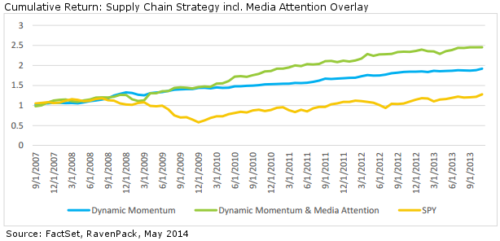Can Earnings Sentiment Give Investors an Edge over Consensus?
Tracking company earnings is a key element of any fundamental trading strategy. Often, a short-term trading opportunity arises following the realization of a company either missing or beating market expectations. Gaining an edge on such information, however, is very difficult since there are literally millions of eyes on Wall Street looking at the same information. In a recent study, we considered whether earnings sentiment could provide the edge that everyone so much desires.
Well, to address this question, we considered RavenPack Big Data Analytics derived from real-time news and social media content. More specifically, we leveraged RavenPack’s elaborate event taxonomy to track the sentiment of news tagged as being related to earnings, revenues or dividends, i.e. spanning anything from changes to analyst’s estimates or company guidance, to reported figures being better or worse than expected. This allowed us to move beyond the “hard numbers” to consider how earnings information is portrayed in the news from a sentiment perspective and how to weigh potentially conflicting information, i.e. positive historical results vs. negative future guidance.
To arrive at a consolidated view of earnings sentiment for a particular company on a given day, we took a simple average across RavenPack’s event sentiment score – keeping only the most novel events. However, prior to such averaging, we evaluated the performance of the 100+ earnings categories made available by RavenPack, removing the ones that were considered non-performing historically (over the prior two years). Using this procedure, we were able to arrive at a daily earnings sentiment indicator per company.
Based on our earnings sentiment indicator, we created a simple trading strategy that would go long stocks with positive sentiment and short stocks with negative sentiment – with weights determined by the sentiment signal’s relative strength. As a benchmark, we created a similar strategy based on a traditional earnings database focusing on the standardized unexpected values (SUV). The SUV was calculated across earnings-per-share (EPS), dividends and revenues – with the final benchmark strategy being the simple average performance across the three individual strategies. Below, we show the results across the US and European large/mid cap universes – focusing on a 1 day holding period.

Yes! the RavenPack earnings sentiment strategies do in fact outperform the consensus-based benchmarks both in terms of annualized return and Information Ratio (see the table below). We also find a positive correlation between the two strategies – even though relatively modest.





